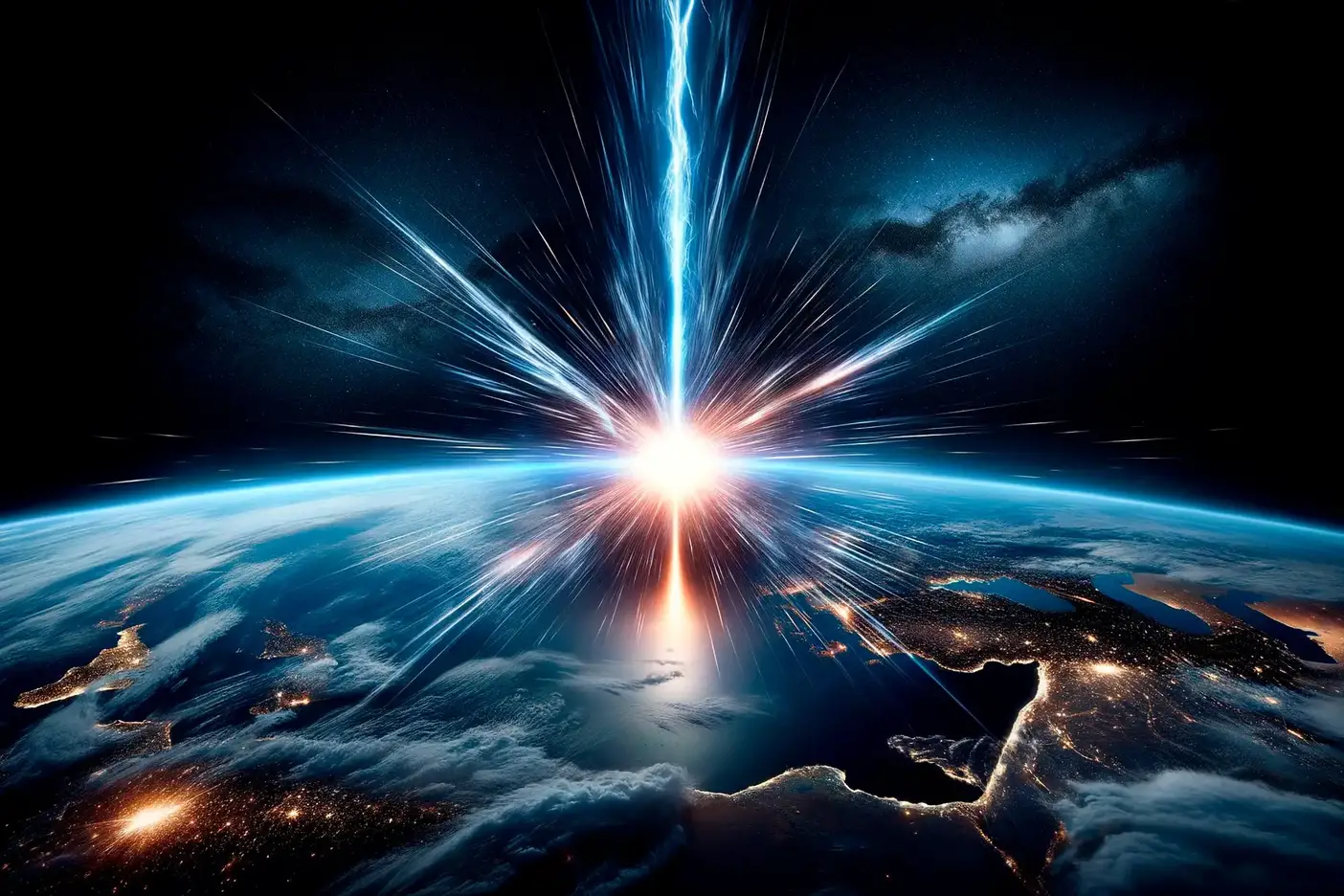Previously unknown high-energy particles hit Earth.
In 1991, the sensors detected a particle whose energy level was 320 EeV (Exa Electron Volts). Researchers thought that this thing was some kind of system error. Then, on May 27, 2021, researchers detected particles with an energy level was 244 EeV.
Sensors detected those particles from cosmic rays. Those ultra-high energy particles are interesting because their energy level is millions of times higher than particle accelerators on Earth can create. One suggestion for those particles' names is "Ameretasu".
"Cosmic rays are energetic charged particles originating from galactic and extragalactic sources. Cosmic rays with extremely high energy are exceptionally rare; they can reach greater than 1018 electron volts or one Exa electron volt (EeV), which is roughly a million times higher than achieved by the most powerful accelerators ever made by humans". (ScitechDaily.com/Not Science Fiction: Earth Hit by Unknown, Extremely High-Energy Particle)
The question is: are those "Amaretasu" particles between the Higgs boson and photon? The thing that makes those Amaretasu particles interesting is their high energy level. If their origin is in intergalactic space, we must ask how they maintain their energy level.
"Astronomers discovered a high-energy cosmic particle named “Amaterasu,” with an unprecedented energy level of 244 EeV, using the Telescope Array experiment in Utah. This rare cosmic ray, comparable to the historic “Oh-My-God” particle, raises questions about its origin and composition." (ScitechDaily.com/Not Science Fiction: Earth Hit by Unknown, Extremely High-Energy Particle)
"Astrophysicists at the University of Utah and the Telescope Array have detected cosmic rays with energies beyond theoretical limits, challenging existing understanding of particle physics. These discoveries, including the Oh-My-God and Amaterasu particles, point to unknown cosmic phenomena and are the focus of ongoing research. (ScitechDaily.com/Astronomers Shocked by Mysterious Ultra-High-Energy Cosmic Ray – “What the Heck Is Going On?”)
"Artist’s illustration of the extremely energetic cosmic ray observed by a surface detector array of the Telescope Array experiment, named “Amaterasu particle.” Credit: Osaka Metropolitan University/L-INSIGHT, Kyoto University/Ryuunosuke Takeshige" (ScitechDaily.com/Not Science Fiction: Earth Hit by Unknown, Extremely High-Energy Particle)
Artist’s illustration of ultra-high-energy cosmic ray astronomy to clarify extremely energetic phenomena in contrast to a weaker cosmic ray that is impacted by electromagnetic fields. Credit: Osaka Metropolitan University/Kyoto University/Ryuunosuke Takeshige. (ScitechDaily.com/Not Science Fiction: Earth Hit by Unknown, Extremely High-Energy Particle)
If the Amaterasu-particles source is in intergalactic space, the question is: how can they keep their energy levels?
Some parts of cosmic radiation form. When high-energy particles that source in intergalactic space hit the galactic nebulas. That thing causes a situation. The particle whose energy level is very high sends similar radiation to Cherenkov's radiation.
During that process particle's energy level decreases. When a particle travels in the galaxy, it releases more energy. And that causes a question, what was the particle's original energy level if it hits the sensor on Earth with 330 EeV power?
Are Amaretasu-particle particles that come out from wormholes? Or are they particles that form when hypothetical faster-than-light particles, Tachyons lose their energy and form super-high energy particles?
Are those ultra-high energy particles the result of wormholes? If a particle travels a long time in space. It releases its energy. Why those "Amaretasu" particles can keep their energy during the long journey?
Amaterasu particles come from some other particle. That yet unseen particle is even at the higher energy level. So could the Amaretasu particle travel in the wormhole, the energy channel that denies it to deliver its energy? Or could their origin be in the hypothetical Tachyon particles?
Faster-than-light particles called Tachyons are the hypothesis. But there is the possibility that Tachyons are things that can slow their speed lower than the speed of light in extremely low energy areas in the universe. And between galaxies and galaxy groups is possible that Tachyons can lose so much energy that they form particles that can interact with 3D material.
One answer could be that those Amaretasu particles traveled through wormholes near Earth. That thing makes them keep their energy level. Another possible thing could be that Amaretasu particles are a source of hypothetical tachyon interaction.
Hypothetical faster-than-light particle Tachyon that loses its energy can fall in the universe to the area where the energy level is very low. That means they fall from the fourth dimension or their speed increases so much that they can form super-heavy particles that can interact with the material. Between galaxies and galactic groups energy level is very low. That could pull energy out from the tachyon if that particle exists. And that causes induction conclusion. Are those "Amaretasu" particles the Dark energy source?
The idea is that when a particle travels in the interstellar or intergalactic space. It sends its energy away. Energy travels out from a particle very fast if energy levels between it and its environment are far from each other. And because Arametasu travels in space a long time that means it releases its energy during the entire journey. So the origin of that Arametasu particle is in a particle whose energy level is even higher than Arametasu.
https://www.astronomy.com/science/if-tachyons-exist-how-might-they-be-detected/
https://scitechdaily.com/astronomers-shocked-by-mysterious-ultra-high-energy-cosmic-ray-what-the-heck-is-going-on/
https://scitechdaily.com/not-science-fiction-earth-hit-by-unknown-extremely-high-energy-particle/
https://en.wikipedia.org/wiki/Tachyon
https://en.wikipedia.org/wiki/Wormhole







No comments:
Post a Comment
Note: Only a member of this blog may post a comment.